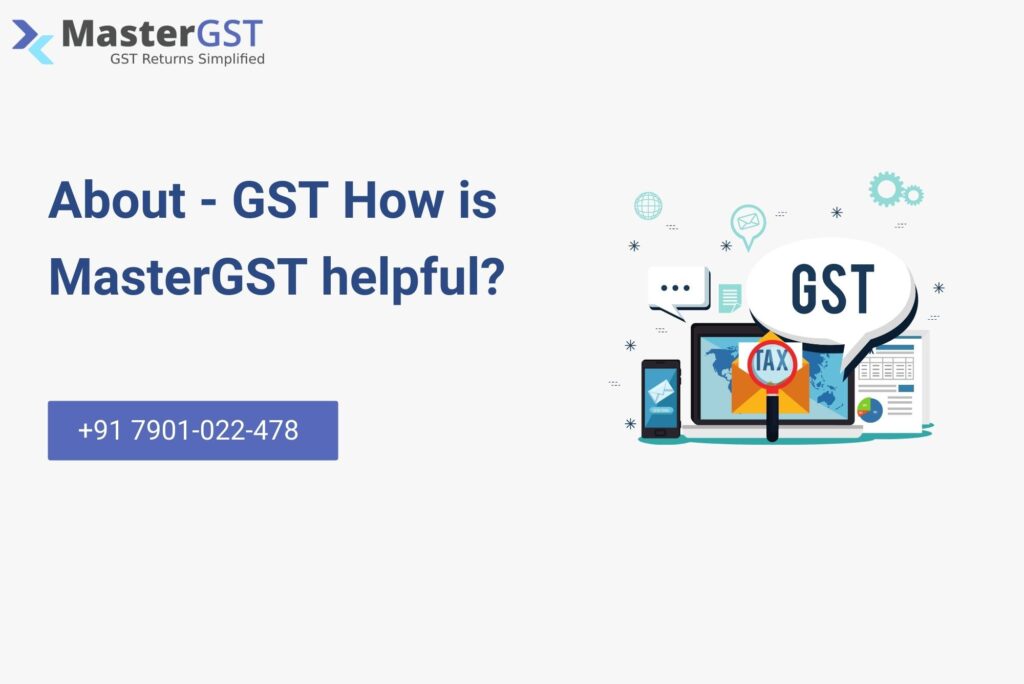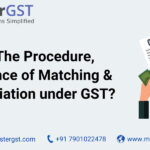Goods and Service Tax is being glorified as a system of taxation by which economy will take an upward swing and further it will ease the trade and industry with respect to the indirect tax system of the country. “Only one” indirect tax has to be paid by the trade industry and all the other indirect taxes will be subsumed in GST. It presents India as a unified market to business owners and also aims at bringing a lot of black money back into the mainstream economy.
What is GST?
GST is abbreviated as “GOODS and SERVICE TAX”. The Goods and Services Tax or GST are scheduled to be launched on the 1st of July, and it is set to revolutionize the way we do our taxes. GST is a consumption based tax levied on the sale, manufacture and consumption on goods & services at a national level. This tax will be substituted for all indirect taxes levied by the State and Central government. Exports and direct tax like income tax, corporate tax and capital gains tax will not be affected by GST. In a nutshell, the only value addition will be taxed and burden of tax is to be borne by the final consumer.
It would be a dual GST with the Centre and States simultaneously levying it on a common tax base. The GST to be levied by the Centre on the intra – State supply of goods and/or services would be called the Central GST (CGST) and that to be levied by the State GST (SGST) which will be levied by the State. Similarly Integrated GST (IGST) will be levied by and administered by Centre on every inter-state supply of goods and services.
Now, Goods and Services Tax will be levied at every point of sale. Assume that the entire manufacturing process is happening in Rajasthan and the final point of sale is in Karnataka. Since Goods & Services Tax is levied at the point of consumption, so the state of Rajasthan will get revenue in the manufacturing and warehousing stages, but lose out on the revenue when the product moves out Rajasthan and reaches the end consumer in Karnataka. This means that Karnataka will earn that revenue on the final sale, because it is a destination-based tax and this revenue will be collected at the final point of sale/destination which is Karnataka.
How does it work?
GST would apply to all goods other than crude petroleum, motor spirit, diesel, aviation turbine fuel and natural gas. It would apply to all services barring a few to be specified. With the increase of international trade in services, GST has become a global standard.
When you buy supplies for your business, you’ll be charged 10% in GST which you can claim back as a credit. At the end of each GST period – usually quarterly, but occasionally monthly – you need to account for the GST you’ve collected on your sales minus any that you’ve paid (the credits) on your purchases. The difference is the amount payable (or refundable if credits on purchases exceed debits on sales).
A nationwide tax reform cannot function without strict guidelines and provisions. The GST Council has devised a foolproof method of implementing this new tax regime by dividing it into three categories.
When Goods and Services Tax is implemented, there will be 3 kinds of applicable Goods and Services Taxes:
CGST: where the revenue will be collected by the central government.
SGST: where the revenue will be collected by the state governments for intra-state sales.
IGST: where the revenue will be collected by the central government inter-state sales.
In most cases, the tax structure under the new regime will be as follows:
Transaction New Regime Old Regime Comments
| Transaction | New Regime | Old Regime | Comments |
| Sale within the state | CGST + SGST | VAT + Central Excise/Service tax | Revenue will now be shared between the Centre and the State |
| Sale to another State | IGST | Central Sales Tax + Excise/Service Tax | There will only be one type of tax (central) now in case of inter-state sales. |
GST under the supply of goods and services takes place in Union Territories is called UTGST. The Union territory tax is levied on all intra-State supplies of goods or services or both, except for the supply of alcoholic liquor for human consumption.
The Union territory tax in respect of the supply of taxable goods or services or both by a supplier, who is not registered, to a registered person shall be paid by such person on reverse charge basis as the recipient and all the provisions of this Act shall apply to such recipient as if he is the person liable for paying the tax in relation to the supply of such goods or services or both.
Therefore, technically SGST cannot be levied in a Union Territory without legislature. This applies to the following Union Territories of India:
- the Andaman and Nicobar Islands;
- Lakshadweep;
- Dadra and Nagar Haveli;
- Daman and Diu;
- Chandigarh; or
- Other territory.
The amount of input tax credit available in the electronic credit ledger of the registered person on account of—
- Integrated tax shall first be utilized towards payment of integrated tax and the amount remaining, if any, may be utilized towards the payment of central tax and State tax, or as the case may be, Union territory tax, in that order.
- The Union territory tax shall first be utilized towards payment of Union territory tax and the amount remaining, if any, may be utilized towards payment of integrated tax.
- The Union territory tax shall not be utilized towards payment of central tax.
It is quite obvious that post approval from the GST Council, the Central Government shall forward the UTGST Law in the Parliament. Once approved by the Parliament, there could be the following combination of taxes applicable to any transaction:
- For Supply of goods and/or services within a state (Intra-State): CGST + SGST;
- For Supply of goods and/or services within Union Territories (Intra-UT): CGST + UTGST;
- For Supply of goods and/or services across States and/or Union Territories (Inter-State/ Inter-UT): IGST
Order of utilization of Input Tax Credit of UTGST would be the same like SGST. This means, Input Tax Credit of SGST or UTGST would first set-off against SGST or UTGST respectively. Output Tax liabilities and balance, if any, can be set-off against IGST Output Tax liabilities.
Does my business need to Register to GST?
Any business with taxable supply turnover over Rs.25 lakhs would be registered for GST. There is also a mechanism available for voluntary registration for GST to help claim input tax credit. GST registration must be obtained within 30 days of exceeding Rs.25 lakhs turnover limit. GST registration would be online through a portal maintained by the Central or State. The GST registration would be provided based on PAN. If you are running your business in India, it’s important for you to become GST compliant. As a business owner, it’s your responsibility to register for GST.
We The MasterGST
We are the Govt. Licensed GST Suvidha Provider. You can simply register for GST by clicking on our website link https://app.mastergst.com/signupall.
For new businesses and startups, it becomes impossible to navigate through various direct and indirect taxes. Constant changes to taxes like Service Tax are making things even worse. But now, the things are set to change with new Goods and Service tax – commonly known as the GST. You can register for GST via our Business Portal MasterGST. You do this by going to our website www.mastergst.com or just by clicking on this link https://app.mastergst.com/signupall help you to sign up.
MasterGST- The easiest way to Pay and Manage Goods and Service TAX (GST). We are a GST compliance solution from Tera Soft (GST licensed GSP provider) will cater to a range of business and be the technology partner in implementing the GST Solution. We have excellent features and some of them are:
- Gateway to process GST transaction.
- Technology platform using Cloud technology.
- Robust and Secure.
- Pay per transaction volume.
- Added features for reconciliation and conflict resolution.
- Simple and user friendly web enabled platform.
- API platform for ASPs / Application Developer.
MasterGST is mainly used by CAs, TAX Practitioners, TAX Consultants, Business and Enterprises, Business and Technology Partners, Franchise and Marketing Partners, APIs Developer Community. To make it simple all can use MasterGST is easy to work and understand.
As an ASP (Application Service Provider) – MasterGST will enable the CAs and Tax Professionals with the right technology and operational features to file GST returns for the clients.
Why MasterGST?
MasterGST many good features like Credential, Technology, Pricing, Secure and Robust. MasterGST provides the solutions like GSP Solution and ASP Solution. So, that Paying TAX and filing the returns are made easy by MasterGST.
Credential- Proven track record to handle Tax & Regulatory Eco system at Tera Soft. Implementing lot of Govt. Projects from past 21 years like AADHAR, PDS, AP Fiber.
Technology- Cloud enable, Secure APIs. Fast Integration with ERPs with Built in Templates.
Secure and Robust- Highly Secure -AD5 and SALT Encrypted. MPLS Connected. High Availability.
Pricing-Consumer Edition, CAs/Practitioners, Small and Medium Business, Enterprises, ASPs.
GET SET GST WITH MasterGST




